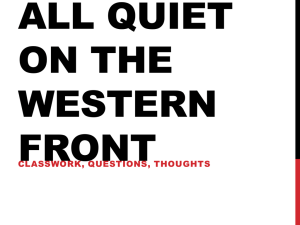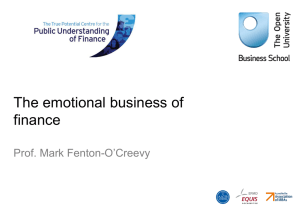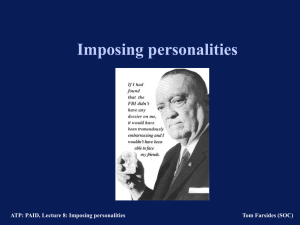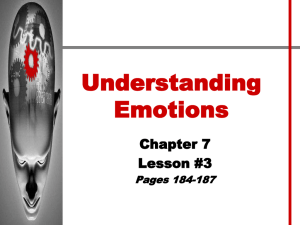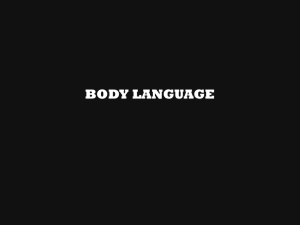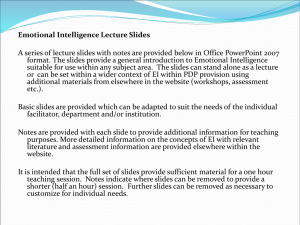ATP: PAID 9
advertisement
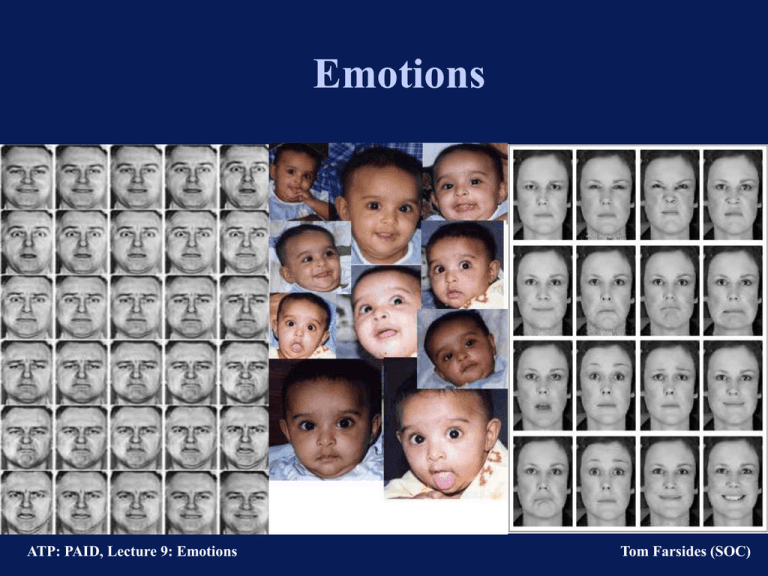
Emotions ATP: PAID, Lecture 9: Emotions Tom Farsides (SOC) Lecture contents • Basic emotions E.g., Izard’s DET • Two emotion/motivation frameworks E.g., Carver & White’s BIS/BAS scales • Emotion regulation ATP: PAID, Lecture 9: Emotions Tom Farsides (SOC) Izard’s Differential Emotions Theory (DET) Each basic (discrete) emotion has three components: Neural Motor-expressive Mental ATP: PAID, Lecture 9: Emotions Tom Farsides (SOC) ATP: PAID, Lecture 9: Emotions Tom Farsides (SOC) ATP: PAID, Lecture 9: Emotions Tom Farsides (SOC) ATP: PAID, Lecture 9: Emotions Tom Farsides (SOC) ATP: PAID, Lecture 9: Emotions Tom Farsides (SOC) ATP: PAID, Lecture 9: Emotions Tom Farsides (SOC) ATP: PAID, Lecture 9: Emotions Tom Farsides (SOC) ATP: PAID, Lecture 9: Emotions Tom Farsides (SOC) Izard et al. (1993) How often in your daily life do you [mothers in the first 3 years after childbirth] feel: ATP: PAID, Lecture 9: Emotions Tom Farsides (SOC) “Five” features of emotions (Izard et al., 1993) 1) Motivational Selective perception Cognition selecting 2) Continuity and stability 3) Individual difference threshholds/personalities 4) Networks with other emotions, e.g., sadness-anger 5) Networks with cognition-netweorks (I.e., schema) 6) Situation-emotion-cognition links Action tendencies Personality traits ATP: PAID, Lecture 9: Emotions Tom Farsides (SOC) Behavioural Approach/Inhibition Systems BIS/BAS: Carver & White (1994) • Centrality of positive/approach and negative/avoidance. • Positive and negative affect as independent dimensions (as individual difference variables). ATP: PAID, Lecture 9: Emotions Tom Farsides (SOC) Russell’s (1980) Circumplex model of affect ATP: PAID, Lecture 9: Emotions Tom Farsides (SOC) Gross (1999): 5 features of emotion regulation 1) Individual differences in situation selection. 2) Situation modification. 3) Attentional deployment. 4) Meaning construal. 5) Emotion expression modulation. ATP: PAID, Lecture 9: Emotions Tom Farsides (SOC) Lazarus & Folkman (1984) ATP: PAID, Lecture 9: Emotions Tom Farsides (SOC) Learn how to relax ATP: PAID, Lecture 9: Emotions Tom Farsides (SOC) Ways of coping scale (revised) (Folkman et al., 1986) Confrontive Coping Stood my ground and fought for what I wanted. Distancing Made light of the situation; Refused to get too serious about it. Self-Controlling I tried to keep my feelings to myself. Seeking Social Support Talked to someone to find out more about the situation. Accepting Responsibility Criticised or lectured myself. Escape-Avoidance Wished that the situation would go away or somehow be over with. Planful Problem Solving I knew what had to be done, so I doubled my efforts to make things work. Positive Reappraisal Changed or grew as a person in a good way. ATP: PAID, Lecture 9: Emotions Tom Farsides (SOC) COPE (Carver et al., 1989) Problem focused coping Active coping Planning Suppression of competing activities Restraint coping Seeking of instrumental social support Emotion focused coping Seeking of emotional social support Positive reinterpretation Acceptance Denial Turning to religion Arguably less useful strategies (in this study) Focus on and venting of emotions Behavioural disengagement Mental disengagement ATP: PAID, Lecture 9: Emotions Tom Farsides (SOC) More on Lazarus on coping and stress • Central role of appriasal means normative and idiosyncratic aspects. • Coping appraisals and strategies each have individual differences and situation-specific aspects. • Can all occur at conscious and/or unconscious levels. • Affected by learning/experience. • Coping is effortful. ATP: PAID, Lecture 9: Emotions Tom Farsides (SOC) Traumatic writing (Pennebaker et al., 1988) 20 min writing for 4 days on trauma or trivial topic. ATP: PAID, Lecture 9: Emotions Tom Farsides (SOC) ATP: PAID, Lecture 9: Emotions Tom Farsides (SOC)



